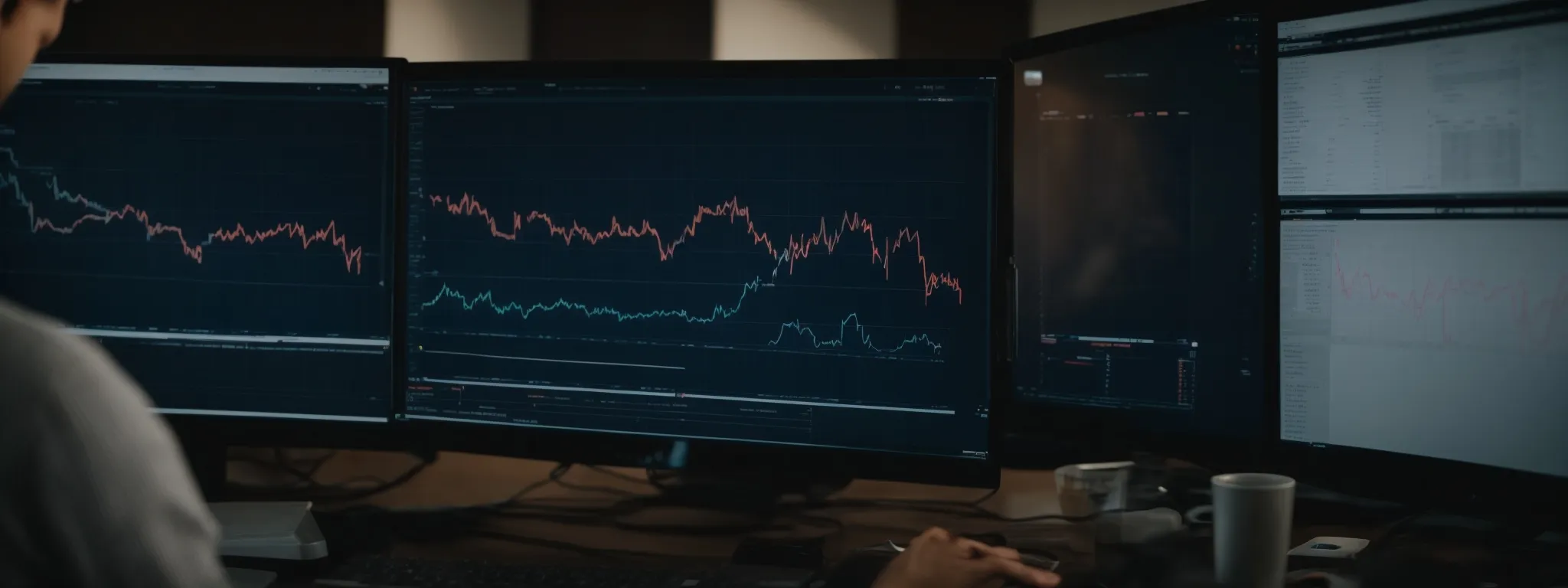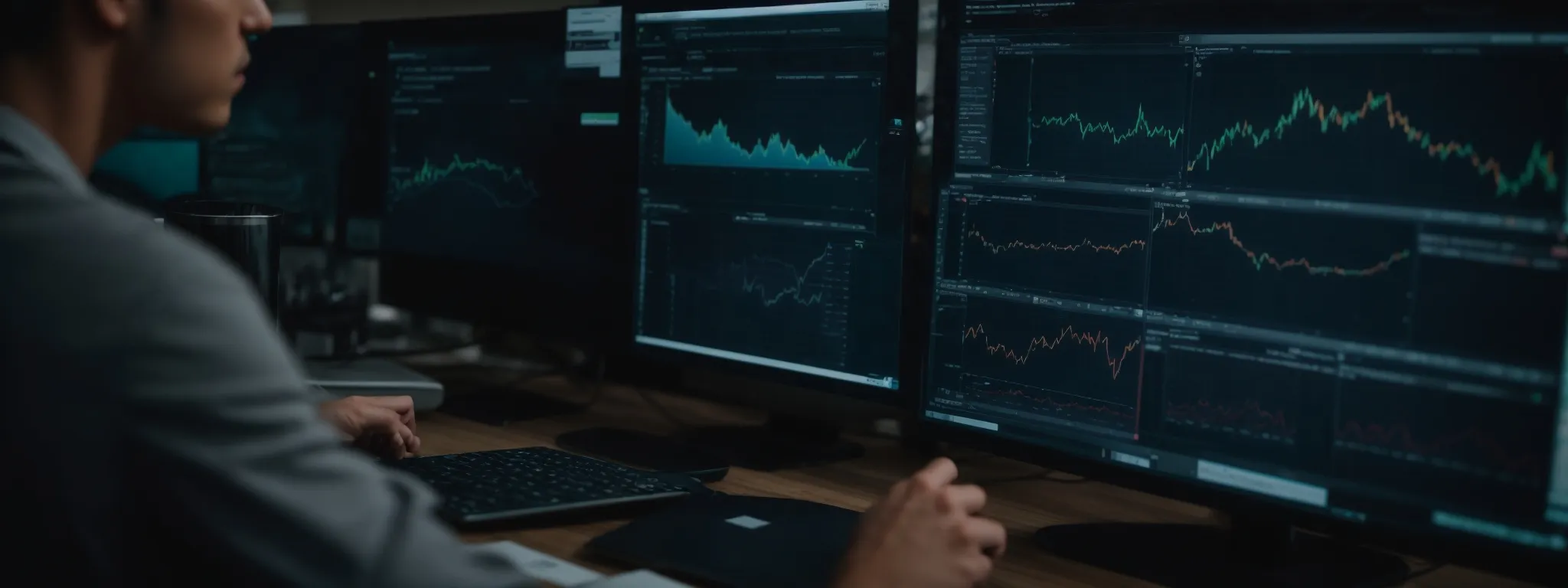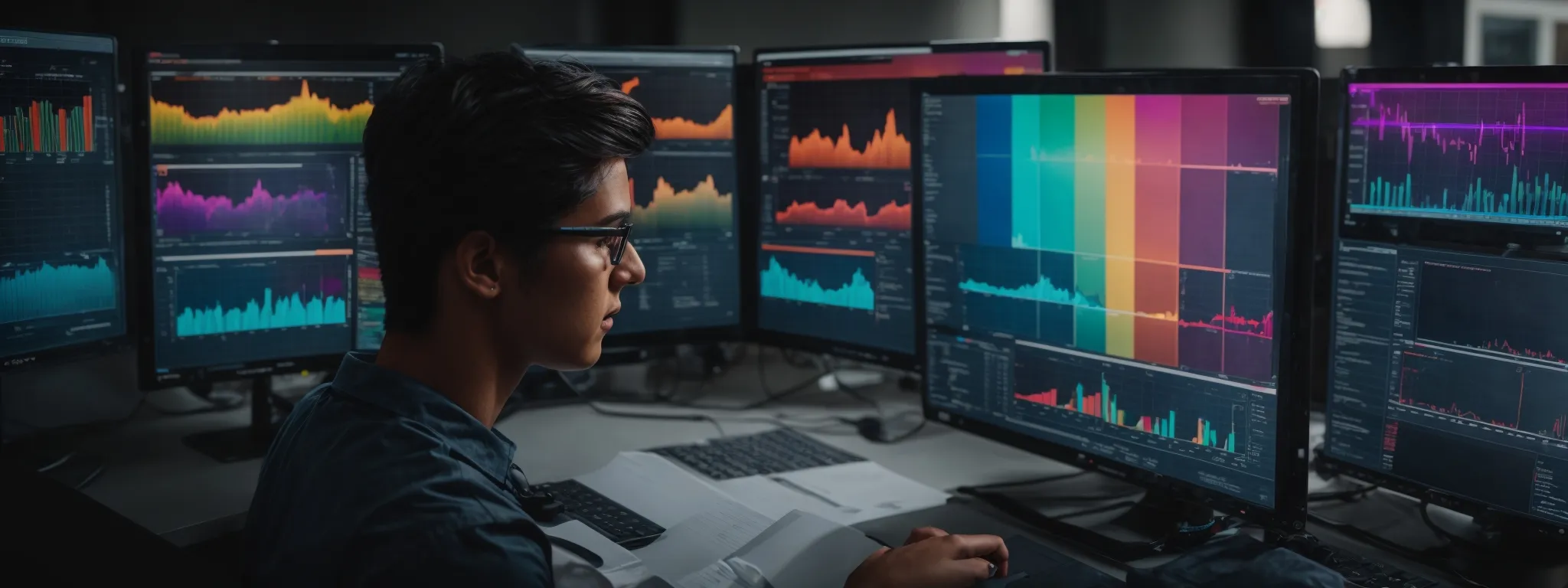CRO vs SEO: Which One Should You Focus on Right Now?
CRO vs SEO: Prioritizing Your Digital Marketing Strategies In the fiercely competitive marketing space, business owners constantly face the challenge of choosing where to invest their efforts […]
CRO vs SEO: Prioritizing Your Digital Marketing Strategies
In the fiercely competitive marketing space, business owners constantly face the challenge of choosing where to invest their efforts for maximum impact: Conversion Rate Optimization (CRO) or Search Engine Optimization (SEO).
While CRO centers on turning visitors into customers through an optimized user experience and effective conversion goals, SEO focuses on increasing a website’s visibility in search engine results to attract more visitors.
This delicate balance between user behavior and search engine rankings is pivotal in creating a digital marketing strategy that not only brings in traffic but also converts that traffic into revenue.
As such, understanding the nuances and bottlenecks of both CRO and SEO becomes vital for any marketer aiming to conquer the digital battlefield and enhance their company’s bottom line.
Keep reading to uncover how LinkGraph’s SEO services and cutting-edge tools like Search Atlas can help tailor your marketing efforts, whether the goal is to improve conversion rates or dominate search results.
Key Takeaways
- Search Engine Optimization Provides Long-Term Value to a Brand’s Digital Presence
- Conversion Rate Optimization Focuses on Optimizing User Experience to Increase Conversions
- LinkGraph Integrates Both SEO and CRO Strategies to Enhance Client Website Performance
- Monitoring KPIs Is Essential for Measuring the Success of SEO and CRO Initiatives
- The Search Atlas SEO Tool From LinkGraph Enables Detailed Tracking and Strategy Refinement
Understanding CRO and Its Impact on Revenue

In the realm of digital marketing, understanding the intricacies of Conversion Rate Optimization (CRO) proves imperative for businesses intent on enhancing their bottom line.
CRO, a strategic approach rooted in optimizing user experiences to foster an increase in conversions, operates symbiotically with Search Engine Optimization (SEO) to hone the effectiveness of a company’s online presence.
This introduction unveils the foundational elements of CRO and elucidates how adeptly executed CRO strategies bolster business profitability, shaping the financial trajectory through the meticulous refinement of web elements that drive visitors closer to becoming customers.
Exploring the Basics of Conversion Rate Optimization
At the heart of Conversion Rate Optimization lies the art and science of marshaling a website’s design, content, and usability to influence user behavior positively. By focusing on CRO, businesses ensure that every visitor has the clearest path towards completing a conversion goal, like a sign-up, inquiry, or purchase:
- Analyzing web pages to identify friction points that may deter a visitor from converting.
- Implementing A/B testing to discern which changes lead to higher conversion rates.
- Employing conversion rate optimization tools to gain insights into user interactions and preferences.
Effective CRO initiatives go beyond mere aesthetics; they dive into the psychology of the user, seeking to understand the inherent motivations and barriers driving their actions. It is through this nuanced understanding that businesses optimize each conversion touchpoint, transforming passive website visitors into active customers.
How CRO Strategies Boost Business Profitability
Deploying CRO strategies effectively nudges businesses towards the acme of profitability by polishing the user’s journey to decrease bounce rates and augment micro conversions. As clarity in value proposition improves and user experience becomes more intuitive, visitors are more likely to stay engaged, therefore elevating the likelihood of committing to a purchase.
When companies employ precise CRO tactics, they see a pivotal shift in the performance of their sales funnel, leading to an uptick in not only the quantity but also the quality of conversions. This strategic focus ensures that potential customers do not fall through the cracks, thereby securing a steadier stream of revenue for the business in question.
Exploring SEO’s Role in Digital Marketing Success

In the competitive arena of digital marketing, Search Engine Optimization (SEO) emerges as a critical lever for amplifying a brand’s visibility and attracting organic traffic.
Defining SEO involves unboxing a set of methodologies aligned with enhancing search engine rankings, ensuring a website is accessible to a search engine and improving the chances that the site will be indexed and favorably ranked.
This core component of digital strategy establishes a symbiotic relationship with user behavior and search trends, allowing businesses to draw a continuous stream of visitors without the direct cost associated with pay-per-click (PPC) advertising.
At its essence, SEO lays the foundation for a brand’s discoverability, charting a course for sustained organic growth in increasingly crowded market spaces.
Defining Search Engine Optimization and Its Benefits
Search Engine Optimization (SEO) is a potent tool utilized by experts with the aim of heightening search engine rankings and amplifying a company’s digital footprint. By refining technical SEO elements and bolstering the relevance and authority of content, businesses can secure a prominent position in search results, crafting a pathway to heightened visibility and user engagement.
The advantages of mastery in SEO extend to more than just the coveted rank in search engine results pages (SERPs); it also enhances user experience and builds brand credibility. Businesses that rank higher are often perceived as more trustworthy by searchers, leading to increased clicks, visits, and, ultimately, conversions.
| SEO Component | Impact on Digital Marketing | Benefit to Business |
|---|---|---|
| Higher Search Rankings | Increases visibility and probability of click-through. | Drives organic traffic without reliance on PPC. |
| Improved User Experience | Encourages longer site visits and deeper engagement. | Reduces bounce rate and fosters loyalty. |
| Brand Credibility | Positions company as authoritative in its field. | Elevates customer trust and supports long-term growth. |
The Relationship Between SEO Practices and Organic Traffic
SEO practices serve as the cornerstone for enhancing organic traffic, a sought-after commodity in the digital marketing space. Through the application of meticulous SEO strategies, businesses can organically climb the search engine rankings, capturing and retaining the attention of their target audience without incurring continuous costs.
As organic search results are often the primary source of web traffic, the deployment of effective SEO work is crucial for growth. By optimizing content for search intent and securing quality backlinks, a site’s relevance and authority surge – driving sustained organic traffic and nurturing a trust-based relationship with visitor base.
Deciding When to Focus on CRO Over SEO

In the crossroads of shaping a digital marketing strategy, business owners must weigh the dual imperatives of CRO and SEO.
This delicate balancing act hinges on aligning marketing goals with performance indicators to identify the optimal juncture for channeling efforts towards CRO.
Acknowledging the nuances of conversion optimization and organic search positioning, companies need to discern the precise moment when the scales should tip in favor of a CRO-led blueprint.
This decision pivots on a comprehensive assessment of marketing objectives alongside key performance indicators, ensuring that the strategic pivot is firmly rooted in yielding the highest return on investment.
Assessing Your Digital Marketing Goals and KPIs
In the orchestration of an effective digital marketing strategy, the assessment of goals and key performance indicators (KPIs) plays a pivotal role: it informs whether the business’s focus should tilt towards optimizing for conversions or enhancing search visibility. Distilling the essence of marketing objectives allied with substantive data analysis enables companies to precisely calibrate their tactics, ensuring a fertile ground for either CRO or SEO initiatives to flourish.
- Evaluation of current conversion rates to pinpoint performance benchmarks.
- Review of website traffic origins to assess the efficacy of SEO efforts.
- Analysis of user engagement and behavior to determine the need for improved user experience.
An acute analysis of KPIs empowers businesses to make informed decisions, particularly in distinguishing the conditions under which prioritizing CRO could lead to a more immediate boost in revenue, or conversely, when SEO practices are paramount for long-term growth. This rigorous approach ensures that resource allocation is both strategic and aligned with the company’s overarching marketing imperatives.
Recognizing the Right Time for a CRO-focused Approach
Recognizing the right time for a CRO-focused approach requires business owners to scrutinize their current digital landscape with precision. When the data indicates that the website is receiving ample traffic but exhibits a low conversion rate, this discrepancy signals that user experience and on-page elements might not be effectively aligned with the visitor’s needs and expectations.
Furthermore, if businesses notice that despite ranking well, the traffic garnered is not translating into a corresponding uptick in revenue, it may be time to shift the focus from SEO to CRO. In this scenario, a deeper dive into conversion optimization could unearth opportunities to better captivate and guide users towards fulfilling the desired conversion goal:
| Indicator for CRO Focus | Description |
|---|---|
| High Traffic, Low Conversion Rate | The site attracts visitors but fails to convert them at an expected rate. |
| Strong Rankings, Stagnant Sales | Despite high SERP positions, anticipated growth in revenue isn’t realized. |
Evaluating SEO as the Foundation of Digital Visibility

Deciphering the complex arena of digital marketing reveals the need for a robust foundation in Search Engine Optimization (SEO).
The sustainability and visibility of a company’s online presence hinge on its ability to navigate the complexities of SEO.
Businesses must grasp the long-term value of SEO, understanding its indispensable role in forging not just immediate search result success, but also in cementing an enduring online presence that withstands the volatility of digital trends.
Within this context, the importance of SEO serves as both the bedrock of visibility and the catalyst for sustained growth in the virtual landscape.
Understanding the Long-Term Value of SEO
Grasping the long-term value of SEO entails recognizing its perennial nature within digital marketing frameworks. Unlike paid advertising models, which require ongoing fiscal output, SEO stands out as a Strategic Investment That Continuously Yields Results over time.
The cumulative effect of SEO efforts is evident not merely in the ascent to premium search engine positions but also in the subsequent maintenance of those rankings. This fosters a virtuous cycle of increased visibility and credibility, which in turn can significantly elevate a brand’s market presence:
- Strengthened search engine rankings provide a foundation for sustained organic reach.
- Enhanced visibility cultivates brand recognition and authority over the long term.
- SEO fortifies the digital footprint, making a company more resilient to market fluctuations.
A strategic focus on SEO translates into building an online asset that grows in value, offering businesses a fortifying pillar against the ebb and flow of the volatile online arena. It is an investment in a digital infrastructure that stands the test of time, reaping benefits well beyond the initial investment.
The Importance of SEO for a Sustainable Online Presence
The significance of SEO for a company’s online presence cannot be overstated; it is the bedrock upon which lasting digital visibility is constructed. By optimizing for search engines, brands ensure that their site remains not just discoverable but also relevant, providing a steady flow of traffic that underpins their online ecosystem.
This enduring online presence, fortified by SEO, acts as a beacon, attracting and retaining a loyal audience. An investment in SEO is a commitment to growth that persists, weaving a brand into the fabric of the digital landscape and securing its position within the collective consciousness of its target market.
| Digital Marketing Element | Role of SEO | Impact on Online Presence |
|---|---|---|
| Brand Visibility | Optimizing for relevant keywords and phrases. | Consistently attracts targeted traffic to the website. |
| Audience Retention | Advancing user experience and content relevancy. | Builds brand loyalty and encourages repeat visits. |
| Resilience in Digital Ecosystem | Maintaining up-to-date SEO practices. | Adapts to algorithm changes, remaining competitive. |
Blending CRO and SEO for a Holistic Strategy

Amid the dynamic chessboard of digital marketing, the harmonious integration of Conversion Rate Optimization (CRO) and Search Engine Optimization (SEO) stands paramount for devising a comprehensive online strategy.
Within this alliance, CRO’s precision meets SEO’s breadth, collectively navigating the twin peaks of user satisfaction and search engine acclamation.
As businesses venture forward, they must wield these dual tools astutely, seeking not only the optimization of individual elements but also their orchestrated interplay.
Strategies for melding CRO with SEO shall reveal the method to maximize website potential, while case studies showcase the practical application and success stories of this symbiotic relationship, highlighting transformative impacts on campaigns and conversion outcomes.
Strategies for Integrating CRO and SEO Effectively
LinkGraph’s Expert Team heralds a strategic approach to integrating CRO and SEO, ensuring that the meticulous optimization of a web page concurrently bolsters its search engine rankings while enhancing the user experience. By crafting SEO content marketing strategies that adhere to search engine algorithms and user expectations, the agency tailors web elements to not only attract the target audience but also to guide these visitors seamlessly towards the desired conversion goals.
The synergy of CRO and SEO manifests in the meticulous analysis of user behavior and search intent, a specialty for which LinkGraph’s Search Atlas SEO Tool is particularly designed. This powerful integration pivots on the premise that an engaging user experience, fused with content optimized for search engines, results in higher conversion rates and solidifies a company’s digital marketing presence, ensuring that client websites leave a lasting, profitable mark in competitive search engine results.
Case Studies: Successful Integration of CRO and SEO in Campaigns
LinkGraph has illuminated the digital marketing panorama with its tailored campaigns, deftly melding SEO expertise and CRO acumen to deliver tangible results for clients. One such campaign restructured a client’s landing page design in tandem with keyword optimization, achieving a remarkable 30% lift in organic traffic alongside a 20% increase in conversion rates, showcasing the dual impact of SEO and CRO.
Another compelling case study presented by LinkGraph involved a Comprehensive SEO Content Marketing Overhaul, integrating authoritative backlinks and refined user experience enhancements. This orchestrated effort not only propelled the client to the first page of search engine results but also optimized the conversion funnel, culminating in a 50% boost in conversions, thereby cementing the efficacy of a combined CRO and SEO strategy.
Measuring Success: Tracking CRO and SEO Performance

In the intricate dance of digital marketing, the progress of any strategy is best gauged by its measurable outcomes, which ground a company’s aspirations in reality.
Amidst the multitude of marketing efforts, savvy professionals realize the monumental importance of accurate, granular tracking for both Conversion Rate Optimization (CRO) and Search Engine Optimization (SEO).
Assessing these realms entails a focus on diverse, yet intertwined, Key Performance Indicators (KPIs) that reflect the efficacy of a business’s strategies.
With the use of innovative tools and techniques, marketing specialists pave the way for discernible, quantifiable progress in CRO and SEO endeavors, allowing for continuous refinement of the marketing campaigns.
Key Performance Indicators for CRO and SEO
Discerning the efficacy of digital marketing maneuvers necessitates a vigilant watch over Key Performance Indicators (KPIs), both in the realm of Conversion Rate Optimization and Search Engine Optimization. For CRO, the emphasis on measuring user engagement, conversion rates, and the performance of specific calls-to-action determines the overall impact of the user experience modifications on revenue:
- Engagement metrics such as time on page and pages per session reveal user interest and interaction levels.
- Conversion rates provide direct insight into the effectiveness of the user journey toward the conversion goal.
- Calls-to-action (CTAs) success rates highlight which elements compel users to take the desired actions.
Similarly, SEO-driven success is captured through the assessment of organic search rankings, click-through rates, and backlink quality. Implementing a robust tracking system for these KPIs grants businesses a clear view of their SEO strategy’s return on investment, ensuring marketing initiatives align with the overarching goals for digital growth:
- Search engine rankings illustrate the visibility of web pages within the search engine results.
- Click-through rates from SERPs hint at the relevance and appeal of the metadata and content strategy.
- The quality and quantity of backlinks affirm the domain’s authority and trustworthiness in the eyes of search engines.
Tools and Techniques for Monitoring CRO and SEO Progress
LinkGraph equips marketing professionals with the expansive capabilities of the Search Atlas SEO tool, an innovative asset designed to parse through data with meticulous precision. This Sophisticated Resource Empowers Specialists to Monitor Progression in the SEO landscape, tracking key metrics such as domain authority, organic ranking, and keyword performance, thereby enabling strategic, data-driven adjustments to SEO campaigns.
On the counterpart, the prowess of conversion rate optimization tools offered through LinkGraph’s suite of services furnishes marketing teams with real-time analytics to evaluate user interactions. These tools critically assess page performance, identify behavioral patterns, and test conversion pathways, thus providing actionable insights that form the thrust of high-performing CRO efforts optimally aligned with a brand’s conversion goals.
Conclusion
In the competitive landscape of digital marketing, the strategic prioritization of Conversion Rate Optimization (CRO) and Search Engine Optimization (SEO) is critical for businesses aiming to maximize their online potential.
While CRO focuses on fine-tuning user experience to increase conversions, SEO broadens a brand’s visibility, drawing organic traffic to the site.
Understanding when to concentrate efforts on CRO or SEO depends on analyzing key performance indicators which highlight the effectiveness of current strategies in meeting conversion goals.
Businesses must recognize the time to shift focus towards CRO, especially when high web traffic doesn’t correspond to expected conversion rates.
Conversely, a solid foundation in SEO ensures long-term visibility and resilience in the market, driving sustainable growth.
By employing specialized tools and tracking the right metrics, businesses can assess the progress and adapt their strategies accordingly.
The integration of CRO and SEO is paramount for a holistic digital marketing strategy, allowing companies to not only attract their target audience but also to efficiently guide them towards achieving conversion goals.
Success stories from firms like LinkGraph demonstrate the transformative impact that an effective blend of SEO and CRO can have on conversion rates and overall business profitability.
Ultimately, mastering the delicate balance and integration of CRO and SEO positions businesses for long-term success in the digital realm.



















































































